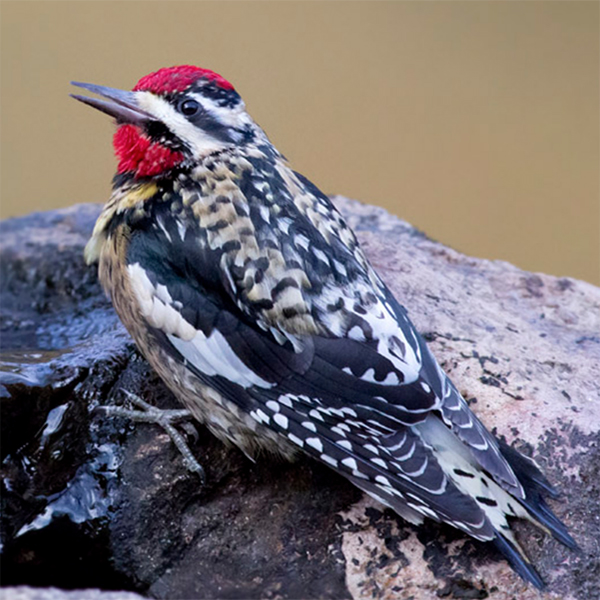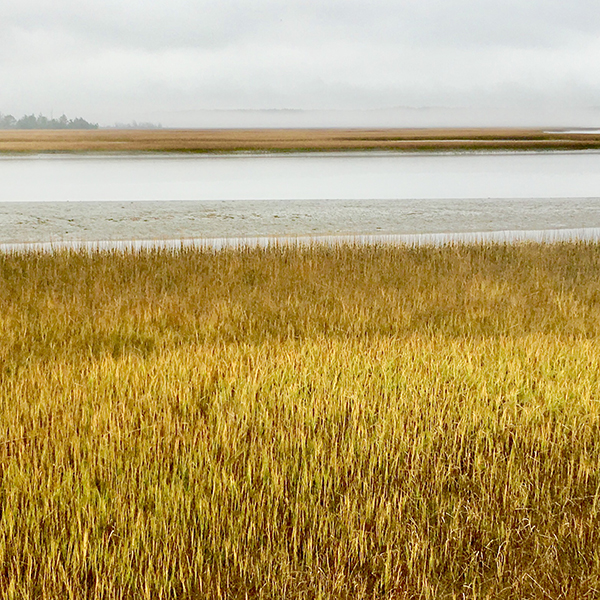Northampton County | Accomack County | Ethics and Conservation
Birding The Eastern Shore of Virginia - Northampton County
Our goal is to provide current, accurate information about some of the Shore’s most interesting birding sites, so that visitors can come prepared to go birding “like a local” and get the most out of their stays in this beautiful part of the world.
The site descriptions here assume that you have binoculars, a field guide to birds, possibly a spotting scope and camera, and that you are familiar with social media, including Project eBird. The descriptions of places cover only the birds that, over the years, seem to be of greatest interest to visiting birders. Carolina Wren, Blue Jay, European Starling, and Red-tailed Hawk, wonderful though they are, do not appear in these accounts, as they are widespread in the East and probably are not the motivation for your visit here.
Birding Sites in Northampton County
CAPE CHARLES BEACH & HARBOR
In Brief: Six city blocks of beach and a small harbor/marina area attract water birds of many sorts, most productive in winter (Purple Sandpiper, bay ducks) and during migration. Worth a quick check even during the busy summer months.
Access: Day use year-round. Public restrooms at the corner of Bay Avenue and Mason Avenue. To canvas the beach and harbor thoroughly, it is best to walk. Park near the intersection of Bay Avenue and Mason Avenue, and start at the Fun Pier, used for fishing as well as sightseeing.
CAPE CHARLES COASTAL HABITAT & NATURAL AREA PRESERVE
In Brief: Small preserve attractive to migrants in both spring and fall; worth a brief check of the boardwalk areas or a longer stint watching the bay at the boardwalk’s end, especially in autumn and winter, when jaeger and waterfowl shows can be significant.
Access: Day use year-round. No bathroom facilities on site, but public restrooms five minutes away in Cape Charles (at beach; in central park; and at public library). The trails begin at a small signposted parking area at the end of Patrick Henry Avenue (off Bayshore Lane).
CHESAPEAKE BAY BRIDGE TUNNEL
In Brief: Northern Gannets, gulls, loons, and waterfowl in winter; passerines during migration; rarities year-round but especially in fall and winter.
Access: Details available at: cbbt.com/activities/birding. All groups must be accompanied by a security detail. All birding (currently limited to one island) must be arranged two weeks in advance. The cost per hour is $50.00 for the group. Each group member must supply personal information and sign paperwork accepting the facility’s rules and regulations. No bathroom facilities except near North Toll Plaza, where there is a a tourism center.
(Photo courtesy Chesapeake Bay Bridge Tunnel.)
CUSTIS TOMBS ON PLANTATION CREEK
In Brief: A short drive from Kiptopeke along Arlington Road, primarily of local historical interest, but occasionally host to flocks of shorebirds and field birds; usually worth a check in autumn and winter, perhaps during inclement or very wet weather in spring.
Access: 2157 Arlington Chase Road, Cape Charles, VA 23310. Day use year-round. No bathroom facilities.
EASTERN SHORE OF VIRGINIA NATIONAL WILDLIFE REFUGE
In Brief: Small refuge at the tip of the Delmarva Peninsula. Birding productive at all seasons, but autumn has the greatest diversity and numbers by far.
Access: 32205 Seaside Road, Cape Charles, VA 23310. Open daily from dawn to dusk unless closed in October through December for hunting (call ahead to check for closures).
Photo: Yellow-rumped Warbler
FISHERMAN ISLAND NATIONAL WILDLIFE REFUGE
In Brief: Barrier island off the tip of the Delmarva Peninsula, a natural resting place for migrants and vagrants in migration seasons; no access during breeding season because of sensitive beach-nesting species and colonial waterbirds.
Access: Details available at: https://www.fws.gov/refuge/Fisherman_Island/events/refugetour.html.
Photo: American Oystercatcher
INDIANTOWN PARK
In Brief: This small (52-acre) county park is often used by recreational groups and private functions, but birding is normally possible on the margins and through the woodland trail even when other activities are in progress. At best a brief, pleasant stop while birding up and down the Seaside Road. Public restrooms are available in the recreation center.
Access: 7399 Indiantown Rd, Eastville, VA 23347; Open daily, 9:00 a.m. to 5:00 p.m.
Photo: White-throated Sparrow by Robert. W. Schamerhorn
KIPTOPEKE STATE PARK
In Brief: Must-visit destination during fall and winter, with full-time raptor monitoring September 1 through November 30, and numerous trails through shrub-scrub and pine forest as well as sheltered harbor, sandy beaches, and excellent view of lower Chesapeake Bay. Availability of restroom facilities is seasonal.
Access: 3540 Kiptopeke Dr, Cape Charles, VA 23310. Day use and overnight guest visitation 6 a.m. to 10 p.m.
Photo: Tundra Swans by Robert W. Schamerhorn
MAGOTHY BAY NATURAL AREA PRESERVE
In Brief: Located just north of the Eastern Shore of Virginia National Wildlife Refuge, a smaller preserve with two trails through scrub-shrub, maritime forest, and saltmarsh habitats. An enjoyable walk at any season, with birding most productive in fall and winter.
Access: Open daily. No bathroom facilities.
Photo: Monarch
MOCKHORN ISLAND WILDLIFE MANAGEMENT AREA
In Brief: A site now visited rarely by birders but potentially productive, consisting of two parcels of land: the accessible GATR Tract (356 acres) on land and remote Mockhorn Island, about 7000 acres of tidal marshlands, accessible only by boat (and with local knowledge of tides and channels). Occasional visits by birders indicate Wild Turkeys, owls, and migrant passerines in the GATR Tract.
Access: Open Sundays to visitors with permits. No bathroom facilities. Permits for individuals may be purchased for the day ($4) or the year ($23) at www.dgif.virginia.gov/access-permit.
Ruby-throated Hummingbird by Robert W. Schamerhorn
EDWARD S. BRINKLEY NATURE PRESERVE
In Brief: A newly-created 85 acre preserve with a lake, trails and an elevated seaside overlook, formerly known as the Northampton County Nature Preserve. Freshwater ducks and waders, open-country birds such as sparrows, shorebirds at low tide and occasional rarities make this a regular whistle-stop by birders during migration and in winter.
Access: In 2020, a new parking area and gate were created for birders to access the landfill pond, trails, boardwalk and seaside overlook. Hours are dawn to dusk. For those birders accustomed to entering through the landfill gate, please drive .3 miles north of the landfill gate to the new parking area.
SAVAGE NECK DUNES NATURAL
AREA PRESERVE
IN BRIEF: Covering 298 acres of prime ancient sand dunes and maritime forest, the preserve’s habitat alone is worth the visit. Try September and October for a first visit, especially after a cold front.
ACCESS: Day use year-round. No restroom facilities.
Photo: Yellow-bellied Sapsucker, by Robert W. Schamerhorn
THE NATURE CONSERVANCY’S BROWNSVILLE PRESERVE
In Brief: A fascinating “seaside” property held by a local family from 1652 until 1978, when it was acquired the The Nature Conservancy. A portion is open to the public along a 1.7-mile trail, a lovely place for a bike ride or walk at any season but most productive for birding during migration and in winter. One or two special events per year permit access to areas otherwise off limits.
Access: 11332 Brownsville Rd, Nassawadox, VA 23413. Open daily from 1/2 hour before sunrise to 1/2 hour after sunset, except during deer hunting season (1 October through 31 December), when hours are restricted to 9:00 a.m. to 3:00 p.m. No restroom facilities.
Photo: Eastern Screech-Owl
VILLAGE OF OYSTER, TNC HORSE ISLAND TRAIL
In Brief: One of a half-dozen remaining “seaside” villages, worth a visit for its historical notoriety as much as for birding, which is most productive in winter and during migration seasons. A newly-created trail at the water’s edge provides interesting perspectives of seaside marsh.
Access: Public settlement. A new restroom is found at the public boat ramp.
Photo: Great Blue Heron
WILLIS WHARF OVERLOOK
In Brief: Interpretive saltmarsh overlook renowned for sizable Marbled Godwit roost (August to April) at higher/rising tide. Excellent spot for scoping distant shorebirds, with lesser numbers of waterfowl, terns, gulls, and occasional loons and grebes.
Access: Open daily, dawn to dusk (not gated; earlier and later also legal). Port-a-johns available at boat launch and overlook platform.















